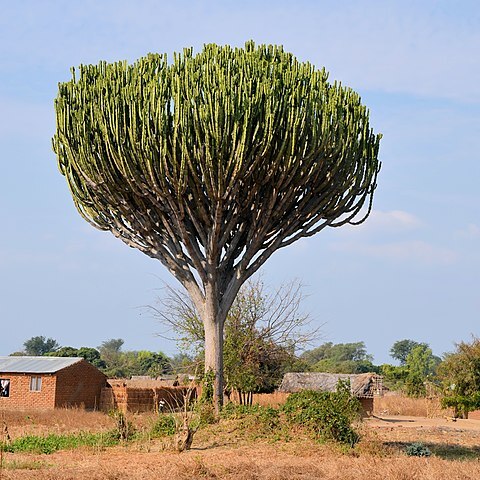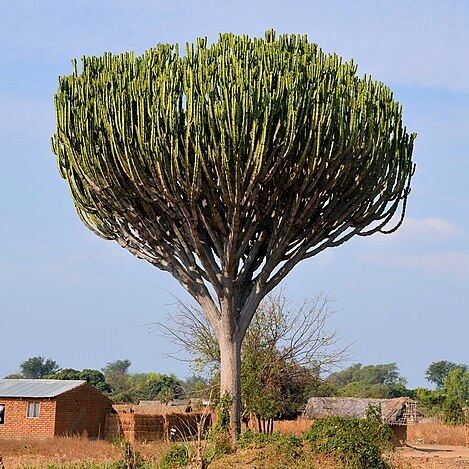Branches persistent from c. 3 m upwards, suberect, rebranching to form eventually a large broadly rounded crown; terminal branchlets fleshy, 4-angled, 6–12 cm wide, square in cross-section to distinctly but stoutly winged with wings to 3 cm wide, usually constricted at irregular intervals into oblong segments to 10–15 cm long or more; margins of the angles straight to sinuate bearing shallow tubercles 1–2 cm apart.
Spine shields to 6 × 5 mm, very obtusely triangular, extending 5 mm above to include the flowering eye; spines stout, to c. 5 mm long; prickles flexible, triangular, 1.5 mm long, soon deciduous; spines and spine shields soon becoming corky, rusty-brown and disintegrating.
Spiny, succulent tree, up to 10 m high. Trunk branching and rebranching into broadly obconic crown of straight, erect or ascending, subparallel branches, all attaining to the same level. Segments 37-75 mm. Branches 4-angled. Spine shields separate. Flowers yellow.
Female flower: perianth irregularly divided into 3 or more filiform lobes 2–4 mm long, sometimes with 1 or 2 teeth; styles 3 (rarely 2), 3–3.5 mm long, joined for 1.5 mm, apices thickened, rugulose, bifid.
Capsule shortly exserted on a stout pedicel 5 mm long, (2)3-locular, subglobose, 7 × 10 mm, fleshy, green becoming red, hardening immediately before dehiscence to 6 × 9 mm, and very obtusely (2)3-lobed.
Cymes crowded towards the apex of the branches, 1–3 at each flowering eye, 1-forked with stout peduncles to 8–20 mm long and cyme branches 5 mm long arranged vertically; bracts to 5 × 6 mm, rounded.
Cyathia 5 × 10 mm, with broadly cup-shaped involucres; glands transversely elliptic, 2 × 4 mm, touching, golden-yellow; lobes transversely elliptic, 2.2 × 3 mm.
Leaves to 8 × 2 cm and oblanceolate on seedlings and young growth, 3 × 3 mm and deltoid on older growth, and soon deciduous.
Seeds subglobose, slightly compressed laterally, to 4 × 3 mm, greyish-brown speckled with paler brown, smooth.
Massive succulent tree to 4–12(15) m high; trunk stout simple; bark rough fissured grey.
Male flowers many: bracteoles spathulate, plumose; stamens c. 5.5 mm long.



